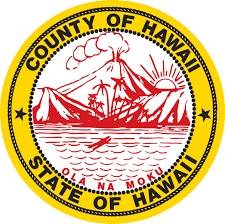HILO — Despite concerns from about a dozen testifiers that changes to Kona’s community development plan would make it harder to hold developers accountable for their promises, a County Council panel Tuesday advanced a measure making a host of amendments.
Bill 87, recommended by the Leeward Planning Commission, faces two more hearings at the council level before becoming law. Sitting as the Planning Committee, the council voted 8-0 to send the bill forward with a positive recommendation.
“This is the process that we went through to make it better,” said Kohala Councilman Tim Richards, who noted many opportunities for public input during the yearlong amendment process. “This is more of a living document than something hard in stone.”
The changes are in response to a 2017 ruling by the Intermediate Court of Appeals that upheld the CDP as law. A Kona couple, Patricia and Richard Missler, sued after the county maintained that the 72-acre Waikakuu Ranch planned unit development was not subject to the CDP.
“It’s the CDP that saved a pristine, old-growth forest in the Waikakuu forest from bulldozers in the Missler case,” said Cory Harden, a frequent testifier on environmental issues. “If the CDP is watered down, I bet you a dollar there’s going to be bulldozers there.”
North Kona Councilwoman Karen Eoff, who also worked on the plan years ago as a council aide, said she understood the angst of certain community members who put hours of effort into creating the plan. She wondered whether the committee should hold the measure until a future meeting to more fully understand it.
“I can understand why people are nervous,” Eoff said. “I’d like to make sure that people are reassured that in doing this we are not taking away some of the protective mechanisms that are in there.”
The county had maintained that plans put forth by community groups organized to address their specific community’s interests were advisory in nature but didn’t have the force of law. The CDPs create in-depth plans that are then adopted by the County Council as part of its general plan.
Kona CDP action committee chairman Charlie Young told the committee the changes were needed because “some of the language may have been inhibiting processes.” Some language was in conflict with county code and planning policies, he said.
A number of the amendments change the mandatory “shall” to the more discretionary “should,” and similar wording changes.
Planning Director Michael Yee called the revisions a “stop-gap measure” until the finalization of the general plan update next year, which will be followed by a new round of amendments to all the CDPs. In addition, said county planner Kamuela Plunkett, “we increased protections to cultural and natural resources.”
Plunkett said concurrency, requiring roads and infrastructure be built as areas are developed, is also strengthened in the CDP amendments.
Ken Melrose, who chaired the CDP steering committee in 2008, praised the Planning Department for helping “align the policies with code realities.”
“Culture and the environment remain at the forefront and policies are amended to unlock many of the impediments that have held back forward progress,” Melrose said.
Others disagreed.
“We used the words ‘shall’ and ‘will’ and ‘would’ to declare that it is imperative to,” said Larry Ford, one of many volunteers who helped create the CDP. “Changing ‘shall’ and ‘should’ in the plan will take the heart out of it and it may never be implemented in the way we were promised.”



